1.Lushan Mountain
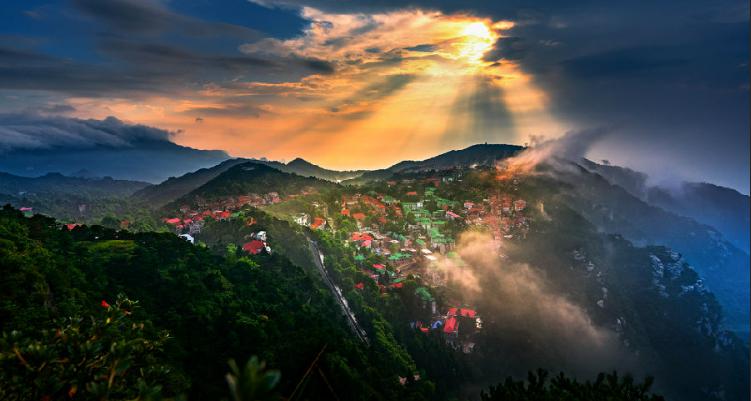
Mount Lushan Scenic Zone, located in Jiujiang City, Jiangxi Province, borders the Yangtze River in the north and Poyang Lake in the east. There are more than 90 peaks in the whole mountain, the highest peak of which is Dahanyang Peak, 1473.4 meters above sea level. There are many valleys, caves, waterfalls, and streams scattered among the peaks, and the terrain and landforms are complex. Mount Lu has appeared countless times in the poetry, songs, and essays of literati and poets, among which Su Shi’s line “I do not know the true face of Mount Lu, but only because I am in this mountain” is the most famous.
2.Jinggang Mountains
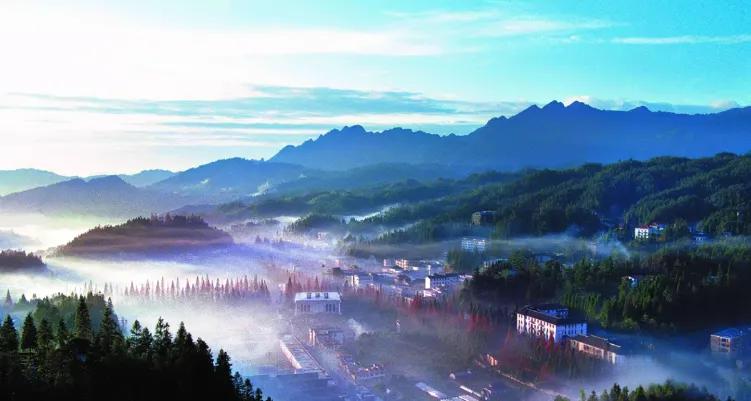
Jinggangshan Scenic Tourism Area, located in Ji’an City, Jiangxi Province, is the cradle of the Chinese revolution. Here, you can see both the red revolutionary relics and enjoy the green natural scenery. The scenic area is divided into 11 major scenic spots, with the core ones being Ciping, Huangyangjie, Main Peak, Dujuan Mountain (Bijia Mountain), and Longtan.
3.Wugong Mountain

Pingxiang Wugong Mountain Scenic Area is located in Pingxiang City, Jiangxi Province. It is a large-scale mountainous scenic spot with the richest tourism resources in western Jiangxi Province. In history, it was once known as one of the three famous mountains in Jiangnan, along with Mount Lu and Mount Heng, and is known as the “Hengshou Luwei Wugong”. The main peak of Wugong Mountain, Baihe Peak (Jinding), has an elevation of 1918.3 meters. The scenic area is mainly composed of alpine meadows, including seven core attractions: Jinding, Jifeng, Yangsi Tomb, Jiulong Mountain, Fayunjie, Wugong Lake, and Wugong Hot Springs.
4.Mount Sanqing

Mount Sanqing Scenic Spot is located in Shangrao City, Jiangxi Province. It has “the majesty of Mount Taishan, the beauty of Mount Huangshan, the precipitousness of Mount Hua, the smoke and cloud of Mount Heng, and the serenity of Qingcheng”. Mount Sanqing has experienced 1.4 billion years of geological changes and vicissitudes, forming a unique granite peak forest landform. Strange peaks and rocks, ancient trees and famous flowers, flowing springs and waterfalls, and misty seas and waves are collectively known as the Four Wonders of Nature. Mount Sanqing is also a famous Taoist mountain, and the Sanqing Palace on the mountain is full of incense.
5.Lung Fu Shan
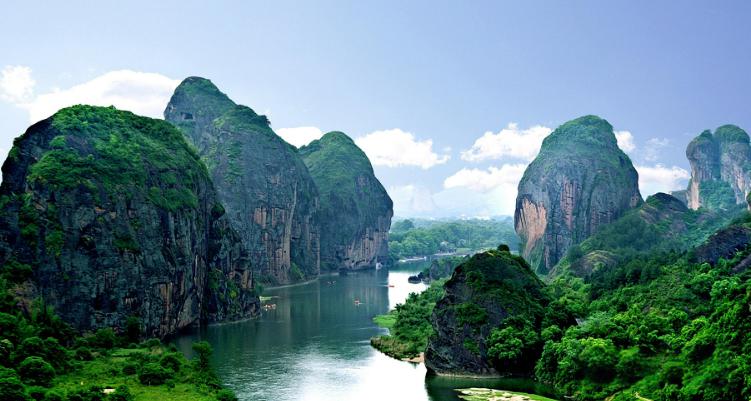
Longhu Mountain Scenic Area is located in Yingtan City, Jiangxi Province. In the middle of the Eastern Han Dynasty, Zhang Daoling, the founder of Zhengyi Taoism, once practiced alchemy here. Legend has it that “once the alchemy was completed, the dragon and tiger appeared, hence the name of the mountain. Yingtan Longhu Mountain is the” ancestral home “of the Zhengyi Taoism. In the history of Chinese Taoism, it holds a significant position and role in carrying forward the past and opening up the future, as well as exerting a significant influence. Longhu Mountain is known as the “Danxia Wonderland”, with main scenic areas including Shangqing Palace Scenic Area, Tianshi Prefecture Scenic Area, Longhu Mountain Scenic Area, Xianyan Shuiyan Scenic Area, Rock Tomb Group Scenic Area, Xiangbi Mountain Paiya Stone Scenic Area, and Dufeng Mazu Rock Scenic Area.
6.Mingyue Mountain
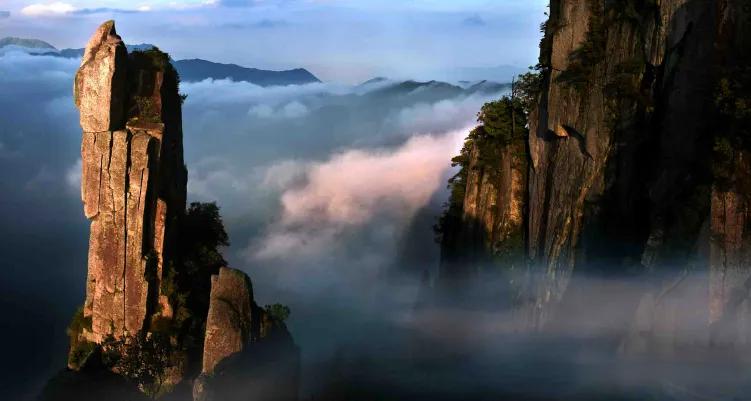
Mingyue Mountain is located in Yichun City, Jiangxi Province. It is named after its main peak, which has a semi-circular shape resembling a half moon. It is divided into six major scenic spots, namely Wentang Scenic Area, Tanxia Scenic Area, Tangjia Mountain Scenic Area, Taiping Mountain Scenic Area, Yujing Mountain Scenic Area, and Yangshan Scenic Area. Scenic spots such as “Cloud Valley Waterfall”, “Snow on the Mountain”, “Black Cloud Cliff Cliff”, “High Mountain Meadow”, and “Cloud Sea Sunrise” are quite famous. Yangshan Temple in Yangshan Scenic Area is the birthplace of the founder of Southern Zen Buddhism, the Longyangshan Sect.
7.Dajue Mountain
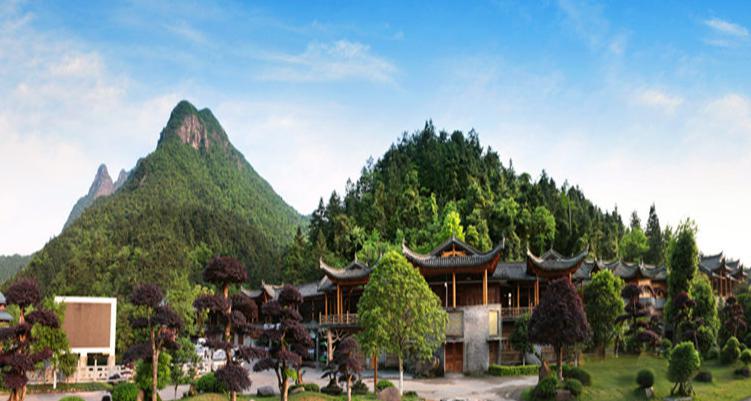
Dajue Mountain is located in Zixi County, Fuzhou City, Jiangxi Province. It originates from the Buddha in Buddhism, who refers to conscious practitioners. It is divided into an eastern and western area. The eastern area is a primitive forest tourism area with 300000 acres of primitive forest as its core; The western district is a comprehensive tourist attraction mainly focused on religious culture and canyon drifting. The Great Awakening Peak is the core landscape of the Great Awakening Mountain, resembling the enlightened Shakyamuni Buddha, with layers of mist and towering mountains. Amidst the towering peaks, the natural scenery of Guanyin is calm and natural, with a heavenly beauty that hides the endless mysteries and mysteries of nature.
8.Guifeng
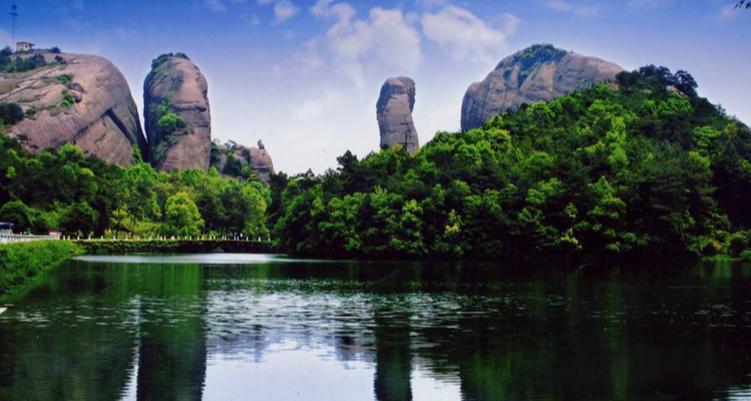
The Guifeng Scenic Area is located in Yiyang County, Jiangxi Province. From a distance, Guifeng looks like a giant turtle. It looked eastward with its head held high, lost in thought. Under the rising sun, it seems that one can still see it stretching and contracting slightly, breathing slowly – this is every visitor’s first impression of Guifeng. Guifeng is named after the saying ‘no mountains, no turtles; no rocks, no turtles’, which makes the entire mountain resemble a giant turtle with a majestic head.
9.Three hundred mountains
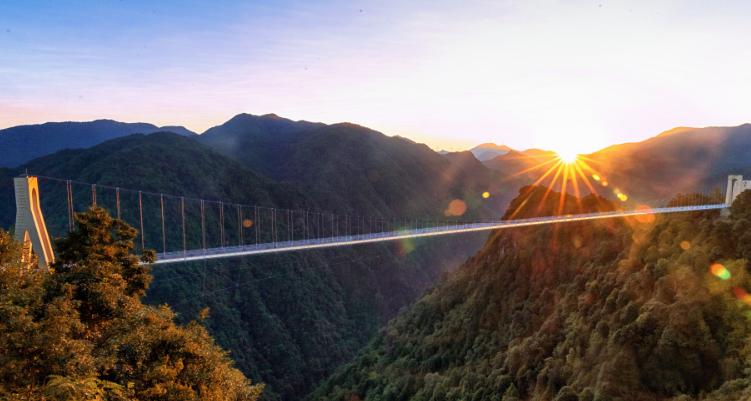
The Sanbai Mountain Scenic Area is located in Anyuan County, Jiangxi Province. Sanbai Mountain is the source of Dongjiang River, hence it is known as the “water of life”. As the source of Dongjiang River, Sanbai Mountain also has the reputation of being the “source of Dongjiang River”. At the entrance of the Sanbai Mountain Scenic Area, you can see a huge monument with the 11 characters “We must protect the source water of Dongjiang River” inscribed by Premier Zhou Enlai himself. It consists of five major scenic spots: Fu’aotang, Dongfeng Lake, Jiuqu Creek, Jianfengbi, and Yangtian Lake. In addition, there are two independent scenic spots: Dongshengwei and Dongjiangyuan Hot Springs. Its main landscapes are Xiushan, Green Water, Flying Waterfalls, and primitive forest landscapes.
10.Damaoshan Mountain
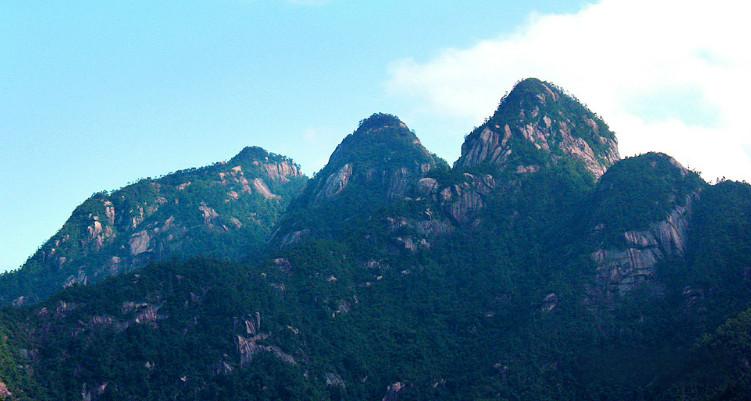
Damao Mountain Scenic Area is located in Dexing City, Shangrao City, Jiangxi Province, and is located in the geographical center surrounded by Mount Sanqing, Longhu Mountain, Wuyuan and Jingdezhen. Damao Mountain is the second famous mountain in Dexing City, facing Mount Sanqing from east to west, belonging to Huaiyu Mountain. Its main peak is 1392 meters above sea level, towering and straight, with clouds and mist swirling around it. In ancient times, it was praised as “thousands of peaks leaning against the blue sky, thousands of peaks obstructed by clouds”. The scenic area is divided into four parts: Damaoshan, Bijia Mountain, Sijiaoping, and Shuangxi Lake, with 84 scenic resources.
11.Wuyuan Jiangwan

Wuyuan Jiangwan Scenic Area is located in the northeast of Wuyuan County, Shangrao City, Jiangxi Province. Jiangwan is an ancient village with rich Huizhou cultural heritage. The village preserves a large number of Huizhou style ancient buildings such as Sansheng Hall, Dunchong Hall, Peixin Hall, and Teng Family Old House, as well as attractions such as Xiaojiang Ancestral Hall, Jiangyong Memorial Hall, Nanguan Pavilion, and Beidou Seven Star Well.
12.Jingdezhen Ancient Kiln Folk Customs Expo Area
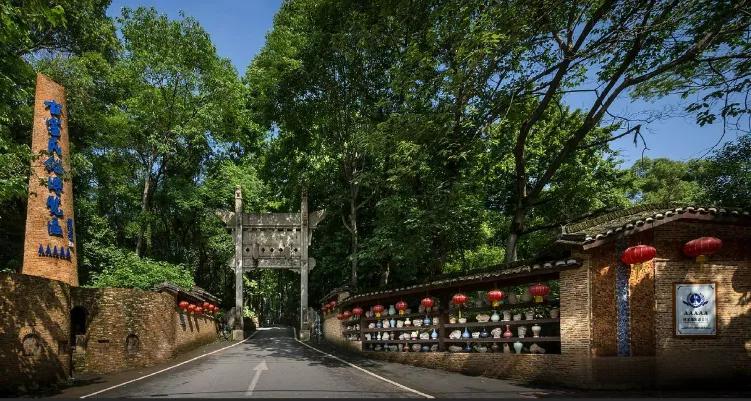
The Jingdezhen Ancient Kiln Folk Customs Exhibition Area is located in Jingdezhen City, Jiangxi Province. It is mainly divided into two sections: the Historical Ancient Kiln Exhibition Area and the Ceramic Folk Customs Exhibition Area. Here, you can see ancient kilns from the Song Dynasty to the Qing Dynasty, reproducing the style of Jingdezhen’s porcelain industry in the 15th and 16th centuries, and enjoy unique porcelain music performances. The buildings in the scenic area are mostly renovated from old houses, allowing tourists to learn about Jingdezhen’s ceramic culture in its antique style.
13.Tengwang Pavilion

Tengwang Pavilion Tourist Area is located in Nanchang City, Jiangxi Province. Tengwang Pavilion stands by the Gan River and is famous for Wang Bo’s “Preface to Tengwang Pavilion”. It is one of the “Three Famous Towers in Jiangnan” and a landmark of Nanchang. The scenic area is mainly composed of the main Tengwang Pavilion and small gardens on the north and south sides. There are nine floors in total, and the fifth floor is the best floor for viewing, which is also the essence of the whole Tengwang Pavilion; The copper plate carved “Preface to Tengwang Pavilion” on the wall of the central hall was the work of Su Shi.
14.Ruijin Republic Cradle Scenic Area
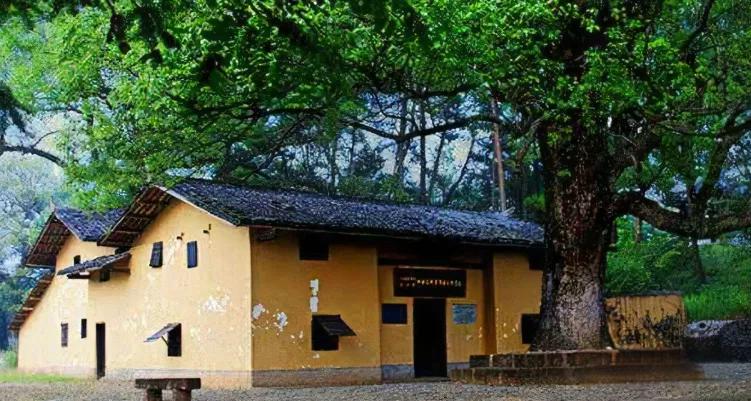
Ruijin Republic Cradle Scenic Area is located in Ruijin City, Jiangxi Province. Ruijin, known as the ‘Red Capital’, was the capital of the Chinese Soviet Republic, mainly composed of Yeping, Hongjing, Ersu University, and the Chinese Soviet Memorial Park (South and North Gardens). This is the starting point of the 25000 mile Long March of the Central Red Army in Yunshi Mountain, and it is a national demonstration base for patriotic education.
15.Gaoling Yaoli
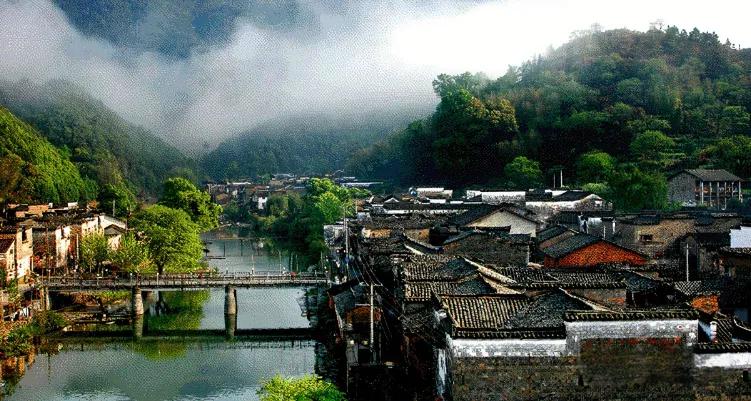
Gaoling Yaoli Scenic Area is located in Jingdezhen City, Jiangxi Province, mainly composed of Gaoling, Yaoli and other scenic spots. Gaoling was the main raw material production area for the ancient Jingdezhen porcelain industry, leaving behind a large number of historical and cultural relics and cultural relics, mainly including mining sites, Taoxikeng, Shuikou Pavilion, Dongbu Ancient Street, ancient docks, etc. Especially the spectacular accumulation of kaolin white tail yarn, known as “green mountains floating with white snow”. The Ming and Qing architectural complex in Yaoli is well preserved, with a large number of Qing Dynasty residences, shops, and ancient Huizhou Avenue preserved.
16.Lushan Xihai Scenic Area

Lushan Xihai Scenic Area, formerly known as Yunju Mountain Zhelin Lake Scenic Area, is located in the southwest of Jiujiang City, Jiangxi Province. It is divided into two major areas: Xihai Lake Area and Yunju Mountain Area. Lushan West Sea has abundant and diverse tourism resources. In addition to Xihaihu District and Yunju Mountain, there are also thrilling and exciting 9D Glass Bridge and Xihai Drifting in Jiangjunxia, dynamic and diverse Xihai Water World, original and rich mineral Xihai Hot Springs, poetic and picturesque Flower Sea and Flower Source Valley on the lake, ecologically healthy orchard picking, and authentic rural cuisine.
17.Fairy Lake
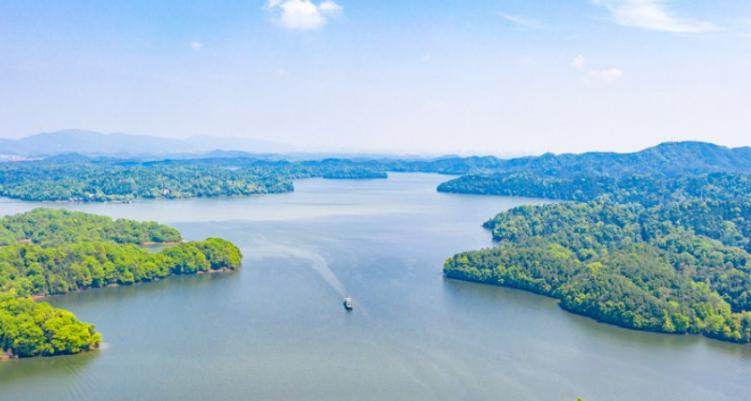
Xiannv Lake Scenic Area is located in Xinyu City, Jiangxi Province. It is named after the myth and legend of the “Sweater Woman” descending to Xinyu County, Yuzhang, in the Eastern Jin Dynasty writer Gan Bao’s “Search for the Gods”. The scenic spots of Xiannv Lake are divided into five parts: Wulong Lake Scenic Area, Zhongshan Gorge Scenic Area, Qianyang Lake Scenic Area, Dagangshan Scenic Area, and Jiulong Bay Scenic Area. The earliest mythological legends recorded in the book “Tianxian Pei”, the first top scholar in Jiangxi, Lu Zhao, the Ming Dynasty’s powerful minister Yan Song, the ancient scientific and technological masterpiece “Tiangong Kaiwu”, and the modern Chinese painting master Fu Baoshi were born here.
18.Poyang Lake National Wetland Park

Poyang Lake National Wetland Park is located in Poyang County, Shangrao City, Jiangxi Province. It is a composite wetland park with wetlands as the main landscape, integrating lakes, rivers, grasslands, mudflats, islands and other types. It is one of the six major wetlands in the world, the largest wetland area in Asia, and the national wetland park with the richest wetland species. It is also the best place to enjoy Poyang Lake.
